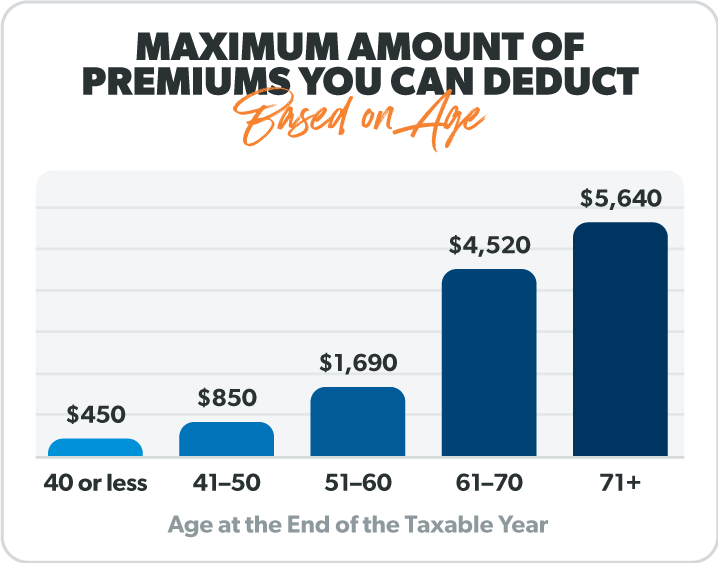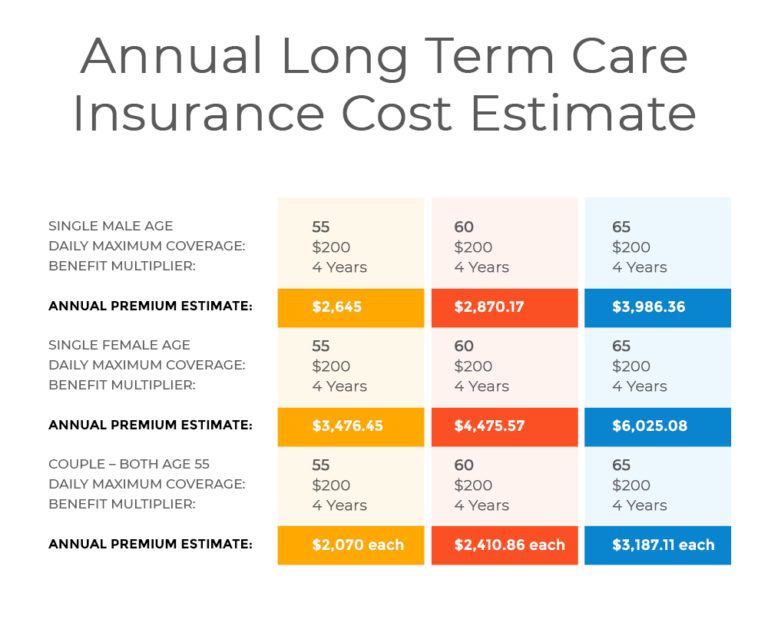Long term insurance cost – Long-term insurance cost is a crucial aspect of financial planning, as it encompasses various types of coverage designed to protect you and your loved ones from unexpected events. From life insurance to long-term care and disability insurance, understanding the costs associated with these policies is essential for making informed decisions about your financial future.
The cost of long-term insurance is influenced by a multitude of factors, including your age, health, coverage amount, and the type of policy you choose. It’s important to carefully consider these factors and compare quotes from different insurance providers to find the best value for your needs. This article delves into the intricacies of long-term insurance cost, providing insights into its components, trends, and strategies for minimizing expenses.
Factors Affecting Long-Term Insurance Costs
Long-term insurance premiums are influenced by various factors that insurers consider when assessing risk. These factors are crucial in determining the cost of your policy, and understanding them can help you make informed decisions about your coverage.
Age
Age is a significant factor influencing long-term insurance premiums. As you age, the likelihood of needing coverage increases, leading to higher premiums. This is because older individuals are statistically more prone to health issues and have a shorter life expectancy. For example, a 30-year-old individual will typically pay lower premiums than a 50-year-old, even with the same coverage amount and health status.
Health
Your health plays a crucial role in determining your long-term insurance premiums. Insurers assess your medical history, current health conditions, and lifestyle factors to determine your risk profile. Individuals with pre-existing conditions or unhealthy habits may face higher premiums. For instance, someone with a history of heart disease or a smoker might pay more than someone with a clean bill of health and a healthy lifestyle.
Coverage Amount
The amount of coverage you choose also impacts your premiums. Higher coverage amounts generally result in higher premiums. This is because insurers need to allocate more funds to cover potential claims for larger coverage amounts. For example, a policy with a death benefit of $1 million will cost more than a policy with a death benefit of $500,000.
Policy Type
Different types of long-term insurance policies offer varying levels of coverage and benefits, leading to differences in premiums. For example, term life insurance, which provides coverage for a specific period, typically has lower premiums than permanent life insurance, which offers lifelong coverage.
Risk Assessment
Risk assessment is a critical component in determining long-term insurance premiums. Insurers use a variety of factors, including age, health, coverage amount, and policy type, to assess the likelihood of a claim being filed. By analyzing these factors, insurers can calculate the risk associated with each policy and determine the appropriate premium to charge.
Strategies to Minimize Long-Term Insurance Costs
Long-term insurance, such as life insurance, health insurance, and long-term disability insurance, can provide financial security and peace of mind. However, these policies can also come with significant costs. To minimize long-term insurance costs, individuals can implement various strategies that involve a combination of proactive steps and informed decision-making.
Benefits of Shopping Around for Insurance
Shopping around for insurance is crucial for securing the best possible rates and coverage. Insurance companies compete for customers, and their rates can vary significantly. By comparing quotes from multiple insurers, you can identify the most cost-effective options that meet your specific needs.
The Importance of Financial Planning for Long-Term Insurance

Long-term insurance plays a vital role in comprehensive financial planning, ensuring financial security and peace of mind in the face of unexpected events. It provides a safety net for individuals and families, helping them navigate potential financial challenges related to health, disability, or life events.
Incorporating Insurance Costs into a Budget
A well-structured budget is essential for managing long-term insurance costs effectively. By allocating a specific amount for insurance premiums, individuals can ensure that these expenses are accounted for and not overlooked.
- Track all insurance premiums: This includes health, disability, life, and any other relevant policies.
- Allocate a dedicated budget category: This allows for a clear understanding of insurance expenses and helps prevent surprises.
- Consider the long-term implications: Factor in potential premium increases over time and adjust the budget accordingly.
Managing Insurance Expenses Over Time
Effective management of insurance expenses involves a proactive approach to minimize costs and maximize value.
- Shop around for better rates: Compare quotes from different insurance providers to ensure you are getting the best possible coverage at the most competitive price.
- Review policies regularly: Identify areas where coverage can be adjusted or reduced to align with changing needs and reduce unnecessary expenses.
- Explore discounts and benefits: Take advantage of available discounts for good driving records, non-smoking status, or bundling multiple policies.
- Consider increasing deductibles: Higher deductibles can often lead to lower premiums, but it’s crucial to ensure you can afford the out-of-pocket expenses in case of a claim.
Common Misconceptions about Long-Term Insurance Costs
Many people have misconceptions about long-term insurance costs, which can lead to uninformed decisions about their financial security. It is crucial to understand the realities of long-term insurance pricing to make well-informed choices.
The Higher Your Age, the More Expensive the Policy
It is true that age is a significant factor in determining long-term insurance premiums. However, this does not mean that older individuals will always face higher premiums. Several factors influence the cost, including health, lifestyle, and the type of coverage you choose.
- For instance, a healthy 60-year-old with a healthy lifestyle may qualify for a lower premium than a 40-year-old with pre-existing health conditions.
- Similarly, a policy with a shorter coverage period or a lower payout amount will typically cost less than a policy with longer coverage and a higher payout.
Long-Term Insurance is Only for the Wealthy
This is a common misconception. Long-term insurance is designed to protect individuals from the financial burden of unexpected long-term care needs, regardless of their income level.
- Many insurers offer a range of plans with varying coverage and premium levels to suit different budgets.
- There are also government programs and financial assistance options available to help individuals who cannot afford long-term care.
Long-Term Insurance is a Waste of Money
This is a dangerous misconception. While long-term insurance premiums can seem expensive, they are a small price to pay compared to the potential costs of long-term care.
- The cost of long-term care can quickly drain your savings and retirement funds, leaving you financially vulnerable.
- Long-term insurance provides financial protection and peace of mind, knowing that your care needs will be covered without depleting your assets.
You Can Wait to Purchase Long-Term Insurance
Procrastination is a common mistake when it comes to long-term insurance. Waiting until you are older and have a higher risk of needing care can significantly increase your premiums or make it difficult to qualify for coverage.
- It is generally advisable to purchase long-term insurance earlier in life, when you are healthier and your premiums will be lower.
- Waiting until you are older may also limit your coverage options, as insurers may have stricter eligibility requirements.
You Can Get All the Coverage You Need with Medicare
Medicare is a valuable program, but it does not cover all long-term care needs. Medicare primarily covers short-term hospital stays and rehabilitation services.
- Long-term care, such as assistance with daily living activities, is not fully covered by Medicare.
- You may need to supplement Medicare with long-term insurance or other financial resources to cover the costs of long-term care.
Resources for Long-Term Insurance Cost Information: Long Term Insurance Cost
Navigating the complex world of long-term insurance costs can be daunting, but accessing reliable information is crucial for making informed decisions. Fortunately, several resources can provide valuable insights into long-term insurance costs, helping you understand your options and make informed choices.
Government Websites, Long term insurance cost
Government websites offer a wealth of information about long-term insurance, including regulations, consumer protection guidelines, and cost comparisons. These resources can be invaluable for understanding the basics of long-term insurance and comparing different policy options.
- The National Council on Aging (NCOA): Provides comprehensive information on long-term care planning, including resources for finding long-term care insurance.
- The Centers for Medicare & Medicaid Services (CMS): Offers information on Medicare and Medicaid benefits, including long-term care options.
- The Department of Health and Human Services (HHS): Provides resources on long-term care planning and financing options.
Insurance Comparison Tools
Insurance comparison tools allow you to compare quotes from different insurers, making it easier to find the most affordable options. These tools can help you save time and money by providing a side-by-side comparison of policy features and costs.
- Insurify: A popular online platform that compares quotes from multiple insurers.
- Policygenius: Offers a comprehensive comparison of life insurance, health insurance, and other types of insurance.
- NerdWallet: Provides independent reviews and comparisons of insurance products.
Financial Advisors
Financial advisors can provide personalized guidance on long-term insurance planning, helping you understand your needs and develop a strategy that aligns with your financial goals.
“Seeking professional advice from a qualified financial advisor is crucial when making long-term insurance decisions. They can provide personalized recommendations based on your specific circumstances, ensuring you have the right coverage and avoid unnecessary costs.”
Evaluating the Credibility of Insurance Information Sources
When researching long-term insurance costs, it’s essential to evaluate the credibility of information sources. Consider the following factors:
- Reputation: Look for sources with a strong reputation for accuracy and objectivity.
- Transparency: Ensure the source discloses any potential conflicts of interest.
- Objectivity: Look for information that is unbiased and presented in a neutral manner.
- Data Sources: Verify that the information is based on reliable data and research.
End of Discussion

Navigating the complexities of long-term insurance costs can seem daunting, but by understanding the factors that influence premiums, comparing quotes, and implementing cost-saving strategies, you can make informed decisions that protect your financial well-being. Remember, seeking professional advice from a financial advisor can provide valuable guidance in tailoring your insurance coverage to meet your unique needs and circumstances.
Long-term insurance costs can be a significant financial burden, especially as you age. If you’re looking for a policy that offers guaranteed coverage and peace of mind, you might consider guaranteed life insurance. While it may come with a higher premium upfront, it provides the certainty of knowing your loved ones will be financially protected, regardless of future health changes.
This can be a valuable investment for those seeking long-term financial security.
